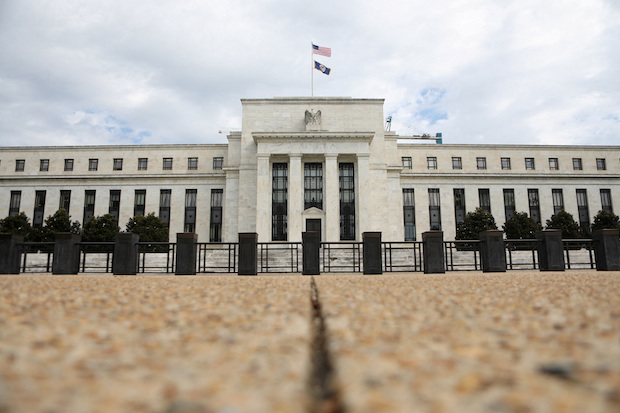Fed delivers big rate hike, signals possible smaller increases ahead

The Federal Reserve building is pictured in Washington, DC, U.S., Aug. 22, 2018. (File photo by CHRIS WATTIE / Reuters)
WASHINGTON — The Federal Reserve on Wednesday raised interest rates by three-quarters of a percentage point as it continued to battle the worst outbreak of inflation in 40 years, but signaled future increases in borrowing costs could be made in smaller steps to account for the “cumulative tightening of monetary policy” it has enacted so far.
Fed Chair Jerome Powell said that change in pace could come as soon as the central bank’s next meeting in December, but he also cautioned that there remains extensive uncertainty about how high rates will need to go and they could well end up being higher than policymakers had estimated at their last meeting in September.
The time to reassess the pace of increases “is coming,” Powell said at his press conference following the decision by the policy-setting Federal Open Market Committee (FOMC) to increase rates by a three-quarter point margin for a fourth straight meeting.
“It may come as soon as the next meeting or the one after that,” Powell said. “No decision has been made. It is likely we will have a discussion about this at the next meeting.”The new language in the US central bank’s latest policy statement took note of the still-evolving impact that its rapid pace of rate hikes has set in motion, and a desire to hone in on a level for the federal funds rate “sufficiently restrictive to return inflation to 2% over time.”
“Ongoing increases in the target range will be appropriate,” the FOMC said at the end of a two-day meeting. While not foreclosing any future decision, Fed officials said, “In determining the pace of future increases in the target range, the Committee will take into account the cumulative tightening of monetary policy, the lags with which monetary policy affects economic activity and inflation, and economic and financial developments.”
The language acknowledges the broad debate that has emerged around the Fed’s policy tightening, its impact on the U.S. and world economies, and the danger that continued large rate hikes could stress the financial system or trigger a recession.
While its recent rapid increases have been done in the name of moving “expeditiously” to catch up with inflation running at more than three times the Fed’s target, the central bank is now entering a more nuanced phase – fine-tuning instead of “front-loading.”
Downshift
The policy decision set the target federal funds rate in a range between 3.75% and 4.00%, the highest since early 2008. The US central bank has raised rates at its last six meetings beginning in March, marking the fastest round of increases since former Fed Chair Paul Volcker’s fight to control inflation in the 1970s and 1980s.
The Fed’s statement said officials remained “highly attentive to inflation risks,” opening the door to further hikes.
The economy, the Fed noted, appeared to be growing modestly, with still “robust” job gains and low unemployment.
The signal that the Fed appears done with that “front-loading” phase of its tightening initially ignited a broad rally in U.S. stock and bond markets, but Powell’s remarks on rates likely going higher than previously estimated triggered a reversal.
At September’s meeting, the median estimate among policymakers pegged the peak fed funds rate at between 4.5% and 4.75% next year. Rate futures markets now imply about 50/50 odds of rates climbing to 5% or higher next year.
The S&P 500 index was about 1% lower, and the Nasdaq Composite slid by more than 1.5%.
Yields on US Treasury securities, which had dropped sharply after the Fed statement was released, turned higher. The 2-year note — the bond maturity most sensitive to Fed policy expectations – rose by 1 basis point to 4.56%.
The shift in the FOMC statement “took me a little by surprise,” said Derek Tang, an economist with forecasting firm LH Meyer. The Fed’s statement “was a lot more definite about a possible downshift than I thought it would be. I thought (Powell) would reserve a lot more judgment until December but it seems like the committee did reach a consensus that they could downshift as early as December, depending on how the data go.”